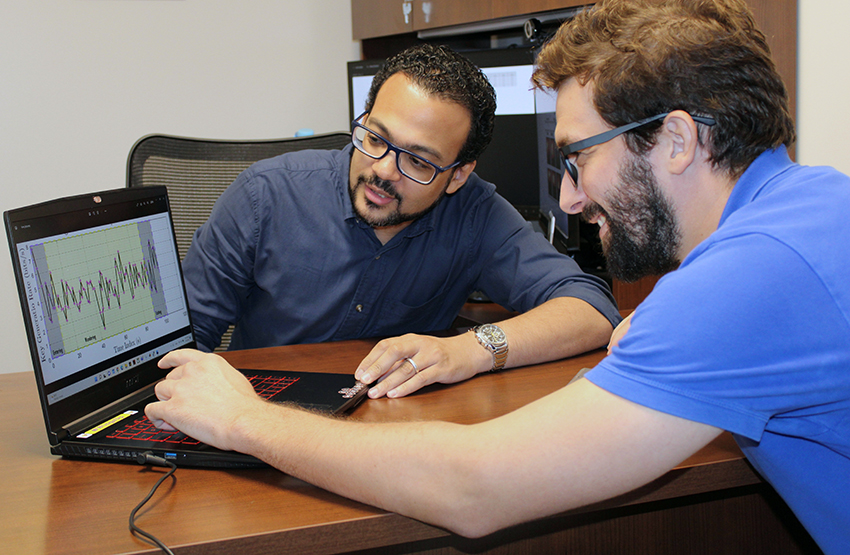Computer Science
Computer science research project aims to maintain 6G connectivity despite mobility
Keeping connected
The sixth generation of wireless networks promises mobile experiences and applications beyond imagination.
Until something blocks the signal, that is.
And that’s the challenge facing today’s researchers – people like Tennessee Tech Assistant Professor Muhammad Ismail – who are delving into this futuristic technology and discovering ways to maneuver around the obstacles associated with the smaller, higher-frequency signals to reap benefits like higher speeds and lower lag.
 For Ismail, who joined the department of computer science in 2019, that means using
machine learning and artificial intelligence to “maintain connectivity despite mobility
in indoor scenarios” amid blockages caused by moving people, furniture – basically
anything solid that gets between users and 6G access points.
For Ismail, who joined the department of computer science in 2019, that means using
machine learning and artificial intelligence to “maintain connectivity despite mobility
in indoor scenarios” amid blockages caused by moving people, furniture – basically
anything solid that gets between users and 6G access points.
“6G is highly sensitive to blockages,” he said. “This project aims to maintain connectivity – if you move, you will remain connected. This is what we are trying to achieve.”
Ismail has a plan that, thanks to a $225,000 grant, he will be working on for the next three years with select Tennessee Tech computer science students.
The grant is one of just five awarded in the United States through a collaborative research program with the National Science Foundation and National Institute of Information and Communications Technology of Japan to “address compelling research challenges associated with programmable networks for next generation core and beyond fifth generation/sixth generation mobile networks.”
Ismail is anxious to delve into a project that could make a significant impact on future humanity as early as the 2030s.
“I feel super excited for several reasons,” he said. “One is that this is a very competitive opportunity.”
Another reason is that this project will go beyond simulations and theories to a prototype that will be tested.
“We get to implement the solution in Japan and see that it works in reality in actual cases,” Ismail said. “If the solution at some point is viable and effective, it can be used in real networks.”
Ismail noted in his grant proposal that future wireless networks are expected to operate in the 60 GHz WiGig (Wireless Gigabit Alliance) frequency band to support high-rate, low-delay 6G applications such as virtual reality, augmented reality, haptic communication, remote surgery and more.
“However, the wireless links at the WiGig band suffer from frequent outages,” he said. “This in turn degrades the perceived service quality for mobile users.”
Ismail believes stable and high-quality wireless connectivity in the WiGig band can be achieved through machine-learning techniques.
“This project proposes an intelligence layer that learns the conditions of the wireless links and the network traffic load and makes informative network management decisions,” he said.
The result? Blockages can be predicted and avoided.
“Eventually, the machine-learning model will know that the channel will probably be blocked soon and switch to another access point,” Ismail said. “So, you keep switching from one access point to another, but you do that proactively – in advance.”
Which means connectivity is maintained.
During the three-year grant period at Tennessee Tech, interested students may apply for the opportunity to be involved in the research.
“We are recruiting Ph.D. and undergrad students who will work closely with us and the team in Japan to develop these solutions,” Ismail said.
Also collaborating on the project are Mostafa Fouda, Ph.D., of Idaho State University and Nei Kato, Ph.D., of Tohoku University in Japan.

